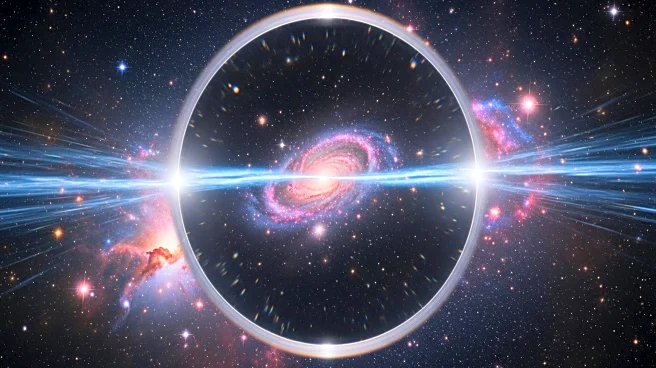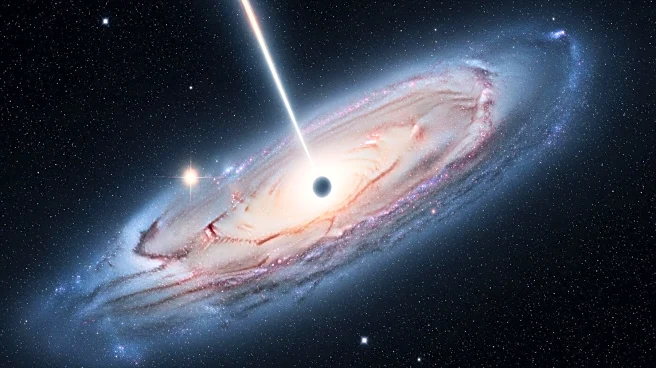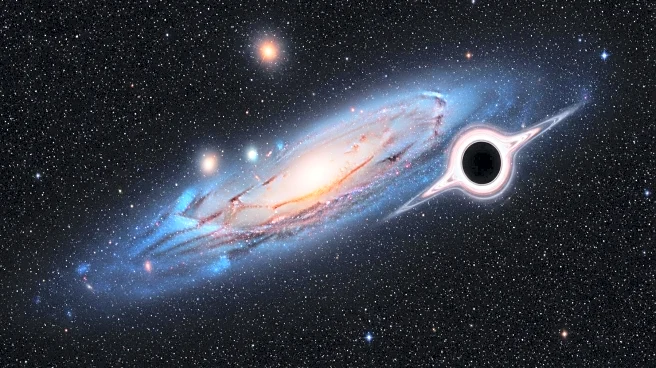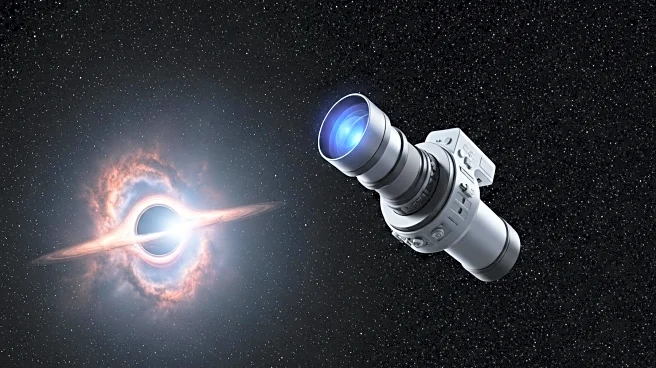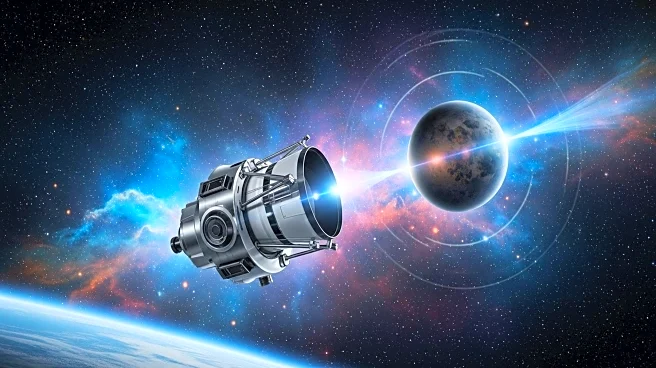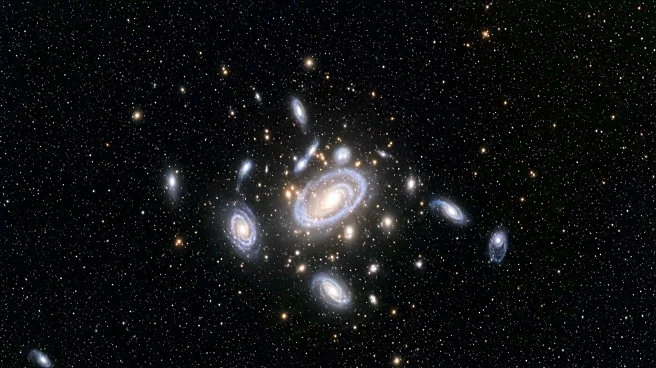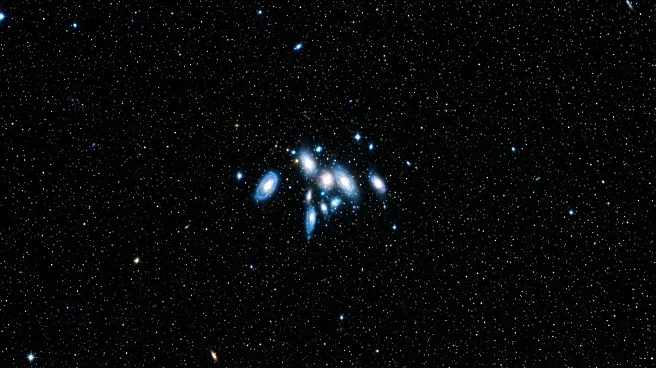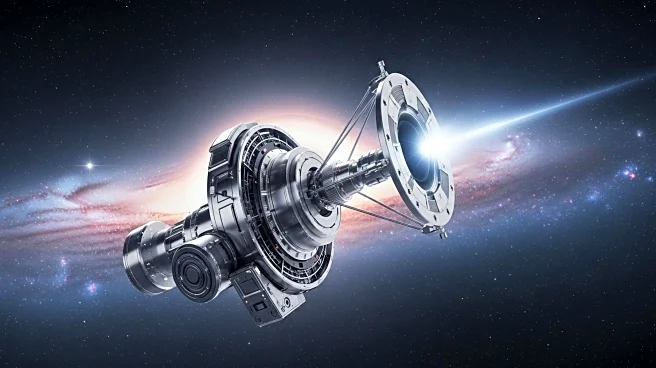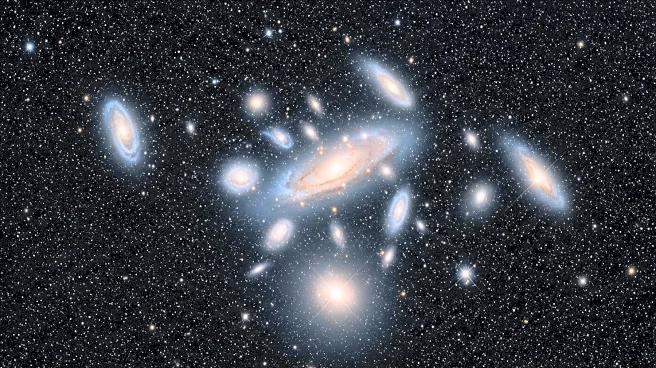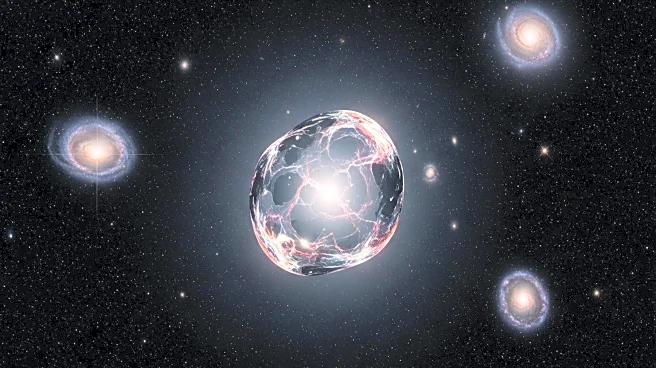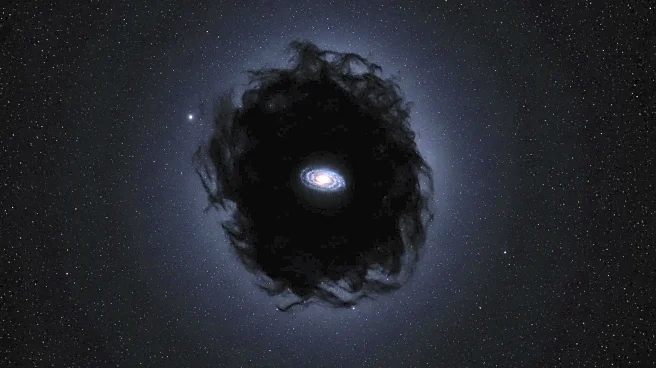What is the story about?
What's Happening?
The James Webb Space Telescope (JWST) has captured images of eight galaxies that confirm the phenomenon of gravitational lensing, a concept predicted by Albert Einstein over a century ago. These images show galaxies appearing stretched and warped into circles, known as Einstein rings, due to the gravitational pull of massive galaxies bending the light from more distant galaxies. This effect allows astronomers to see faraway galaxies more clearly and study their properties in detail. The images are part of the COSMOS-Web project, one of the largest observing programs conducted with JWST, which aims to explore the universe's early formation and the role of dark matter.
Why It's Important?
The confirmation of gravitational lensing by the James Webb Space Telescope is a significant milestone in astronomy, providing further evidence of Einstein's theory of general relativity. This discovery enhances our understanding of the universe's structure and the distribution of dark matter, which cannot be observed directly. The ability to observe distant galaxies in such detail opens new avenues for research into the early universe, galaxy formation, and the fundamental forces shaping cosmic evolution. These findings have the potential to influence future astronomical studies and deepen our comprehension of the universe's origins.
Beyond the Headlines
The use of gravitational lensing as a tool in astronomy highlights the innovative methods scientists employ to study the universe. This technique not only confirms theoretical predictions but also provides practical applications in measuring galaxy masses and understanding dark matter. The success of the JWST in capturing these images underscores the importance of advanced technology in expanding our knowledge of space. As researchers continue to analyze these findings, they may uncover new insights into the nature of dark matter and the forces governing the cosmos.
AI Generated Content
Do you find this article useful?
